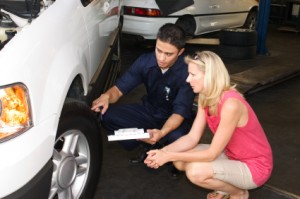Sometimes, a nice drive is exactly what you have to clear your head and give you a sense of freedom. For many Australians, getting out on the open road on a clear sunny day to explore some of the beautiful scenery we now have on offer is the perfect tonic for any stressful week at work. Of course, when the conditions aren’t so sunny, and the road isn’t so open, driving can be quite a stressful experience in in addition to itself. Driving in poor weather conditions is a hazard and really should be avoided where possible, but as we all, frequently it’s unavoidable, so we’ve compiled a list of tricks for dealing with those situations. Always make sure you’re up to date on your latest car service (it’s in the less-than ideal issues that you’ll really need it firing on all cylinders) and stay calm it doesn’t matter what. Treacherous conditions might be navigated with all the right skills and mindset, which means you are the most significant variable in this situation.
 Heavy rain can not only obscure your vision, but could instantly make the roads slippery and dangerous, especially where there hasn’t been rain for a while. A big fear here is hydro-planing, where your vehicle’s wheels lose traction and you find yourself out of hand. To avoid this, travel in a slower pace and keep the wheels stead–no sudden turns at high speeds.
Heavy rain can not only obscure your vision, but could instantly make the roads slippery and dangerous, especially where there hasn’t been rain for a while. A big fear here is hydro-planing, where your vehicle’s wheels lose traction and you find yourself out of hand. To avoid this, travel in a slower pace and keep the wheels stead–no sudden turns at high speeds.
If you need to turn, give yourself plenty of warning, and slow the car right down to make it. Braking in the wet can also be dangerous, as tyres are definitely more prone to skidding. Ideally, keep a lot of room between you and the car before you to allow for any extra time it might take you to stop. Brake slowly but surely, and avoid slamming within the brakes at all costs. The key to safe driving within the wet is prevention, not reaction, so make sure that you minimise the chance of an accident with every decision that you simply make.
Night driving can be hazardous for two reasons. Firstly, if it’s late at night or you’ve been driving for some time, your reactions are slightly slower. Secondly, how well you see is impaired at night, as is some of your depth perception, that makes it harder to make preemptive decisions and evaluate situations from a long distance. It is very important make sure that all of your car’s exterior lights are working well and are clean making sure that other drivers can see you clearly, and if you’re having problems seeing out of the windscreen as a result of glare, pull into a petrol station and provide it a clean–the more dirt you have on your windshield, the harder glare you’ll experience.
With regards to severe storms and or hail, the best option is to pull into a sheltered space. Depending on the size of the hailstones and the force of the wind, it may be safest to abandon your car and seek shelter in a petrol station or shop until it passes, but if this is not possible find somewhere to pull over–NOT underneath trees because they may collapse in a severe storm and cause damage to both you and your car. Yet another thing to remember would be to never drive through a flooded road. Once we learned from the tragedy and devastation on the recent Queensland floods, it only takes a small amount of water to sweep a car off the road.
Making sure that any car repairs are taken care of right after the need presents itself is an excellent strategy to prepare for sticky situations. It’s the less-than-ideal weather conditions that may really test your vehicle, so keeping it in tip top condition is the best chance at safety.

